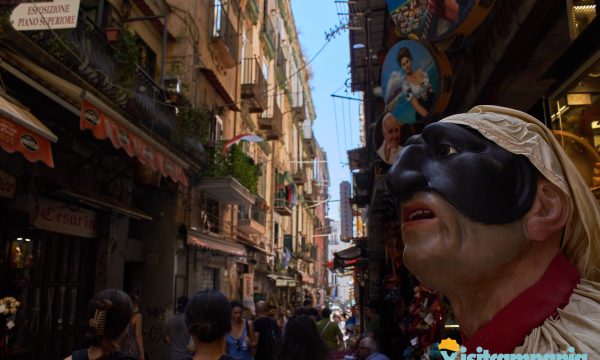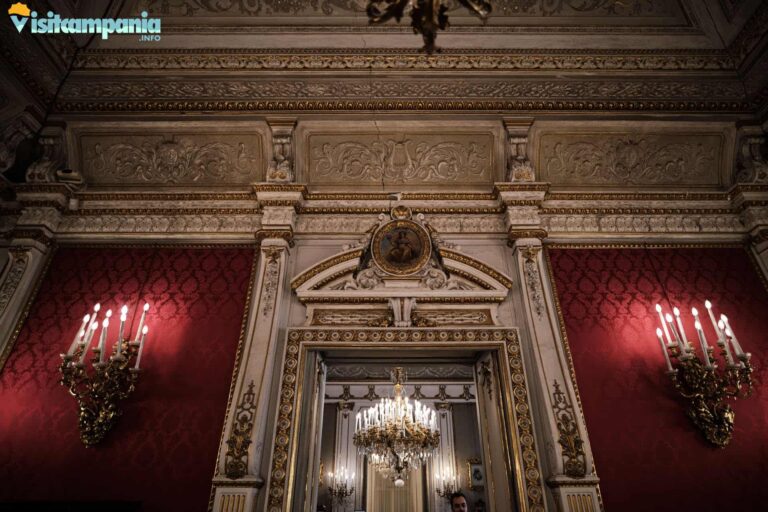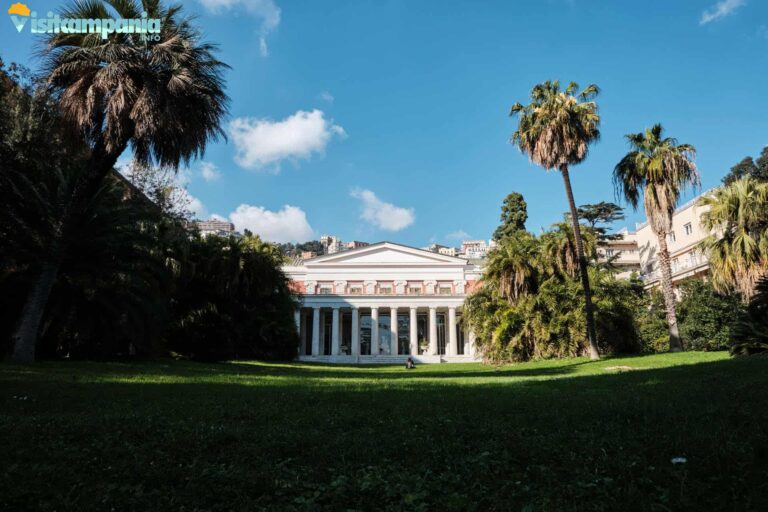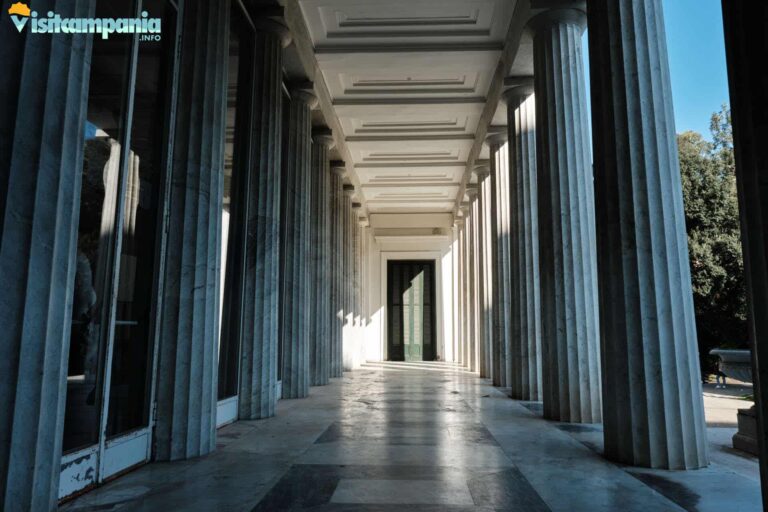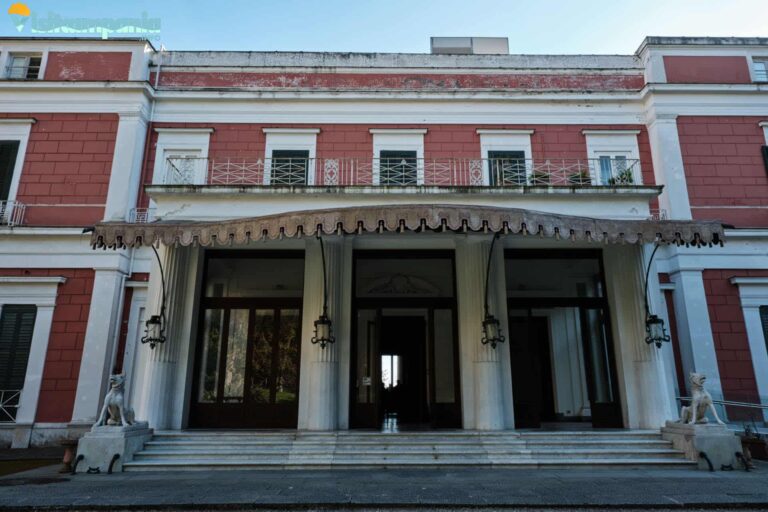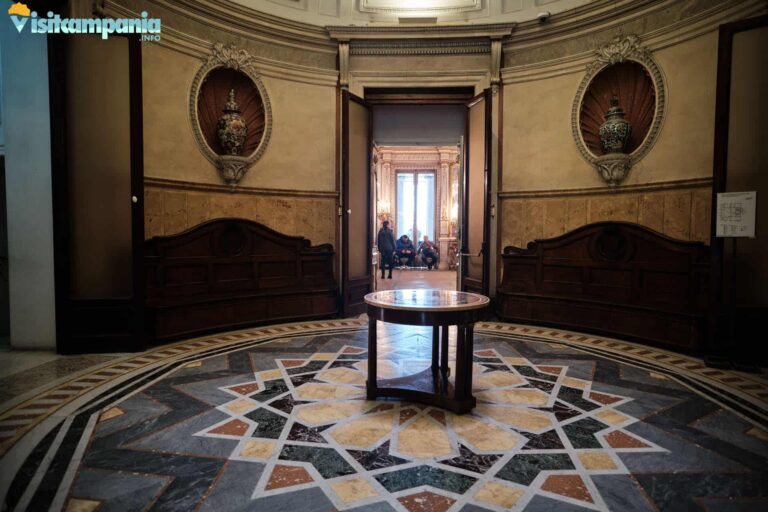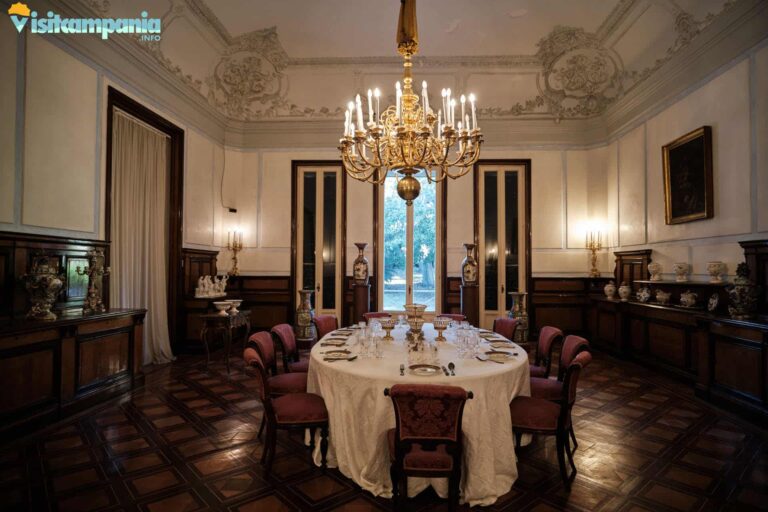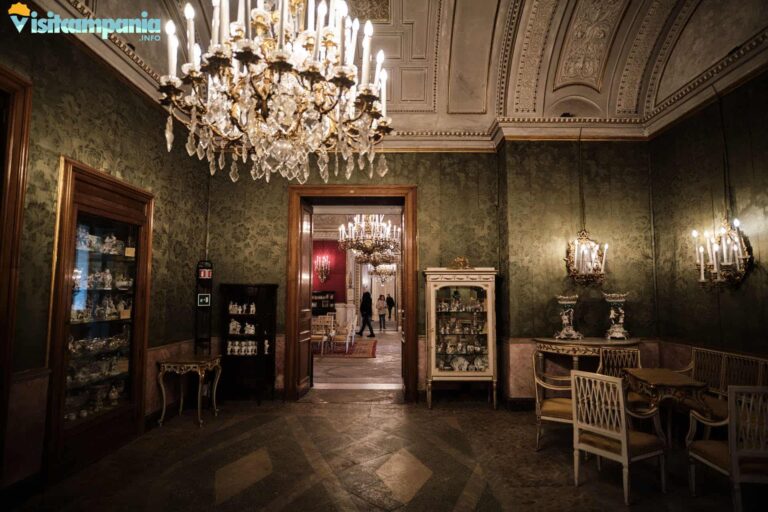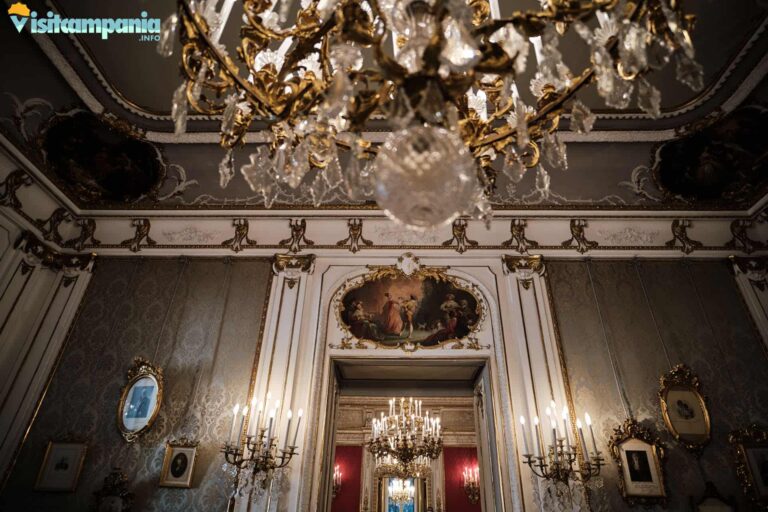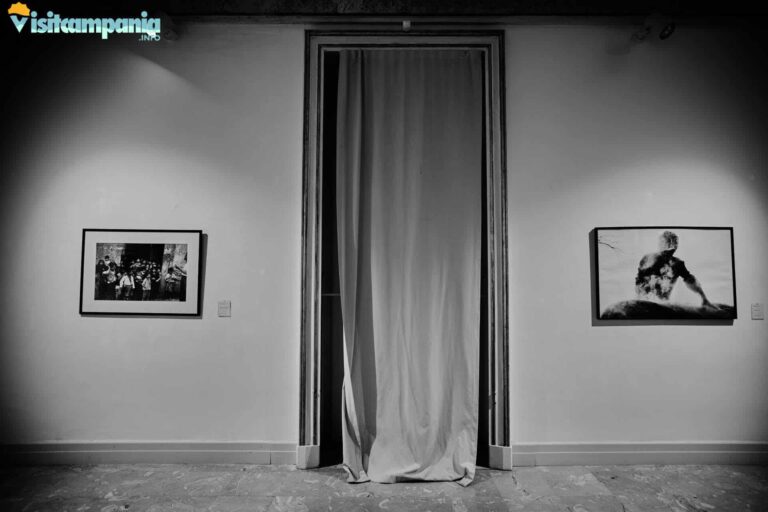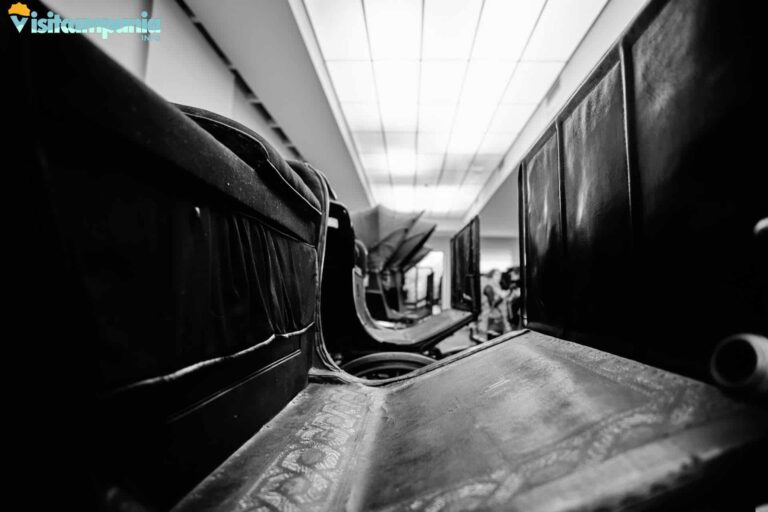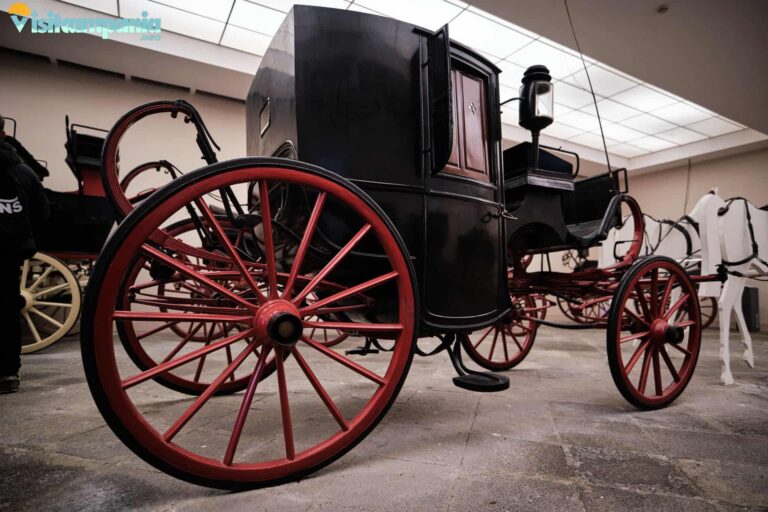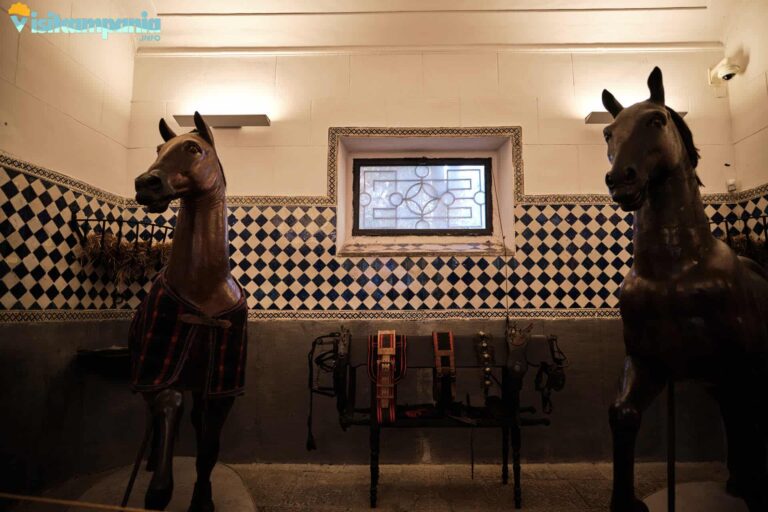Villa Pignatelli Cortes: a neoclassical treasure set in the Riviera di Chiaia
Located on the Riviera di Chiaia in front of the Villa Comunale, a short distance from the sea and halfway between Castel dell’Ovo and the port of Mergellina, Villa Pignatelli Cortes is a splendid example of neoclassical architecture. Of nineteenth-century origin, it is striking for the opulence of the rooms and furnishings. Belonging to three distinct families, it was finally donated in 1952 by Princess Rosina Pignatelli, the last owner, to the Italian State to ensure its protection and destination as a house-museum. Today Villa Pignatelli Cortes houses three museum sections suitable for children:
- The Diego Aragona Pignatelli Cortes museum consists of the Villa, the furnishings and collections of silver, bronzes, porcelain, enamels, crystals, as well as the library and the sound library left as a donation;
- The House of Photography, a place destined to host photographic exhibitions of international level;
- The carriage museum;
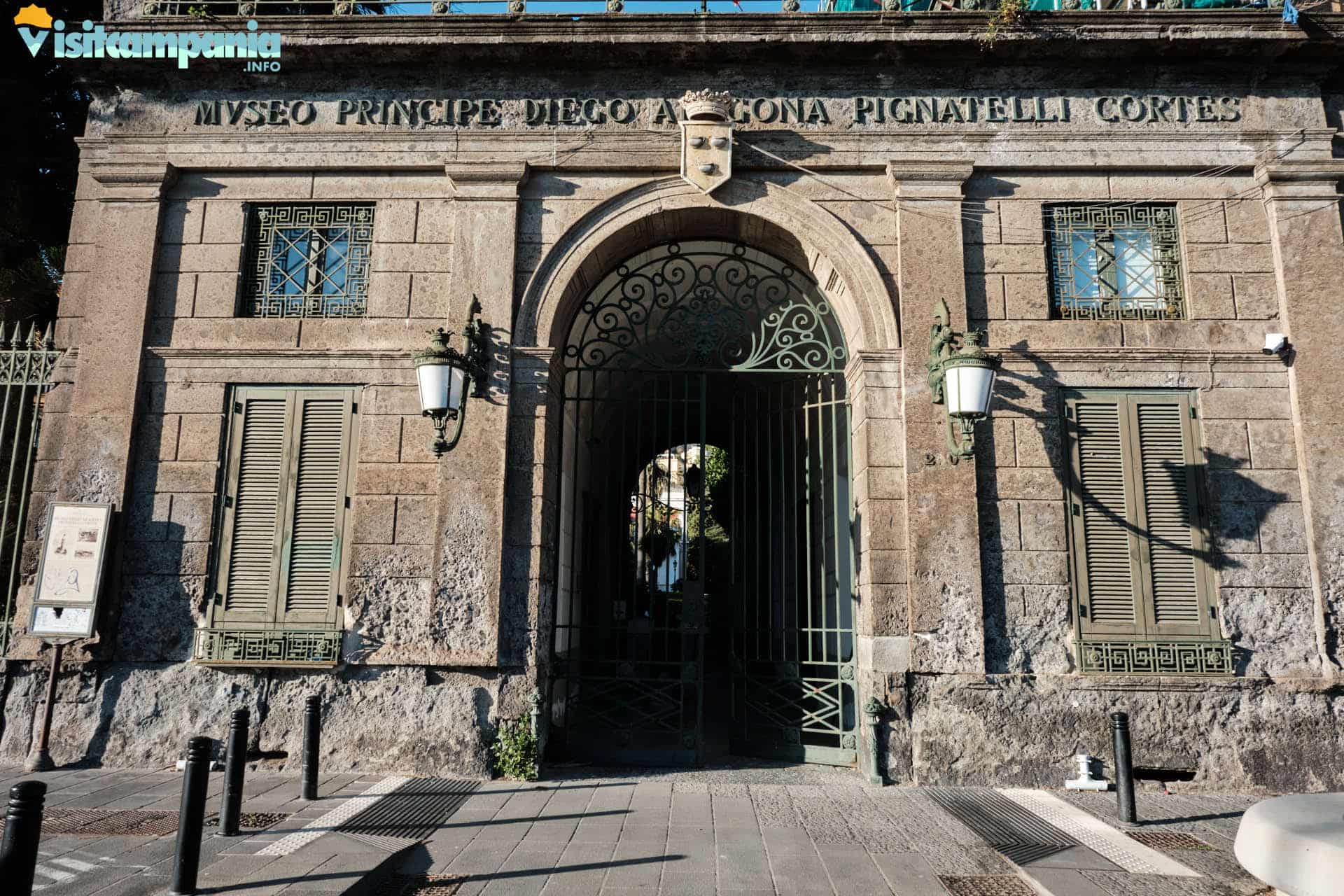
From noble villa to museum: a brief history of Villa Pignatelli Cortes
The works for the construction of the Villa began in 1826 in a place where there was already a building that belonged to the Carafa family that had to be demolished. Commissioned by the baronet Sir Ferdinand Richard Acton, son of John Francis Edward Acton prime minister of King Ferdinand I, they were initially entrusted to the Neapolitan architect Pietro Valente. However, relations between Valens and the English nobleman were not at all easy. To reach an agreement, the architect had to submit more than twenty projects to the client. In 1830 Valente was, however, relieved of his duties. The interior decoration and arrangement of the garden were entrusted to the Tuscan architect Guglielmo Bechi.
In 1841, on the death of Ferdinand Richard Acton, the villa was bought by the family of the German banker Carl Mayer von Rothschild who lived there until 1860.
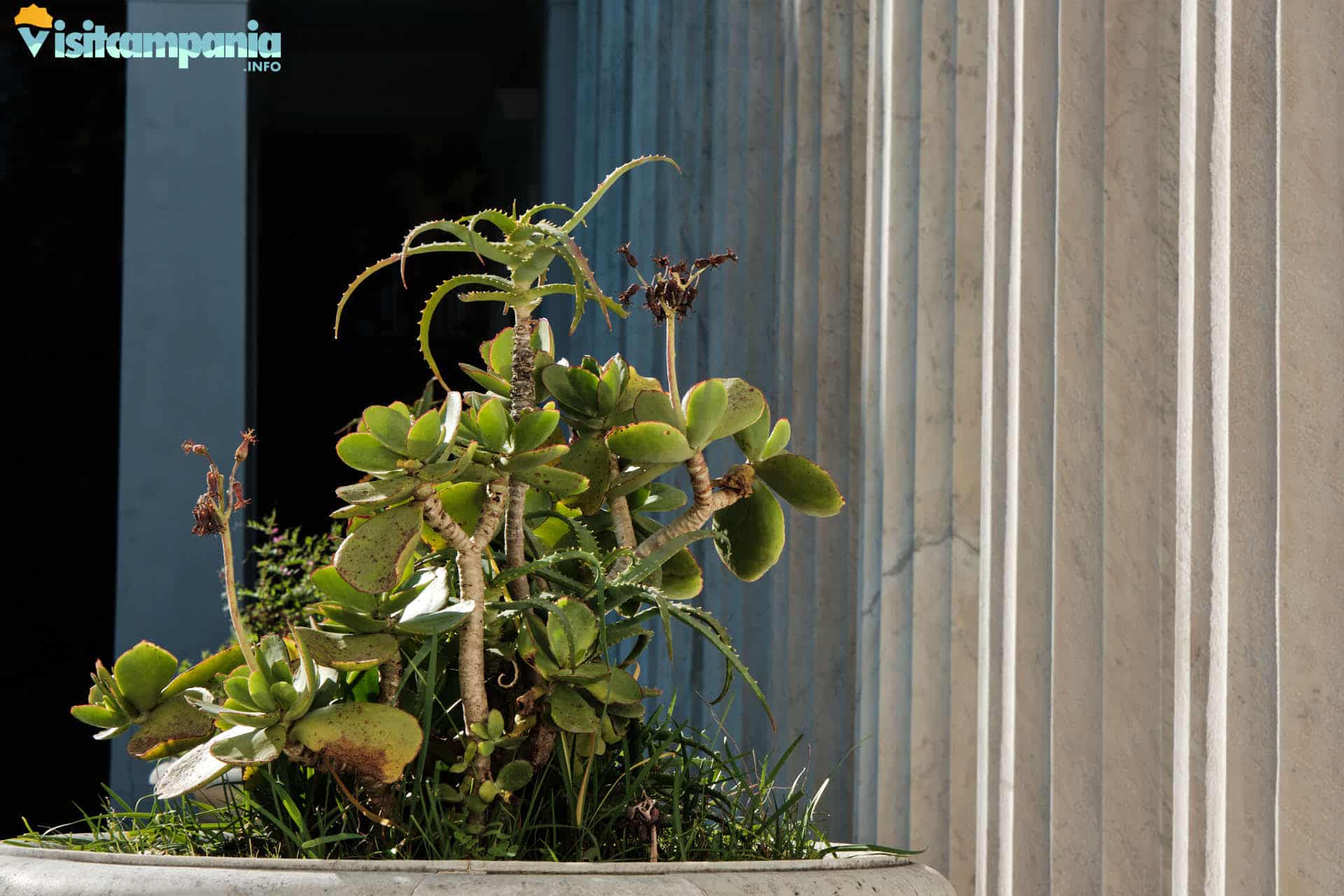
New radical expansion and embellishment works begin, initially entrusted to an anonymous architect French and, subsequently, to Gaetano Genovese , former architect director of the Royal House under Ferdinand II of Bourbon.
With the Unification of Italy and the removal of the Bourbons, the Rothschilds were forced to sell the villa which, in 1867, was bought by Prince Diego Pignatelli Aragona Cortés, Duke of Monteleone.
Even the Pignatelli make changes, especially in the furniture. In addition, the villa is opened to the outside world becoming a cultural reference point for intellectuals and aristocrats.
The Pignatelli family lived in the villa until 1955 when, following a donation made in 1952 by Princess Rosina Pignatelli, it was acquired to the assets of the State. In particular, the villa is donated to the Ministry of Education to ensure its protection and destination as a house-museum perpetuating the name of Prince Diego Aragona Pignatelli Cortés.
The museum opened in 1960. In 1975, in the former stables of the villa, the carriage museum was born. Finally, in 2010, the first exhibition of the House of Photography was set up.
The historic apartments and the Diego Aragona Pignatelli Cortes museum
The exterior of the villa and the garden
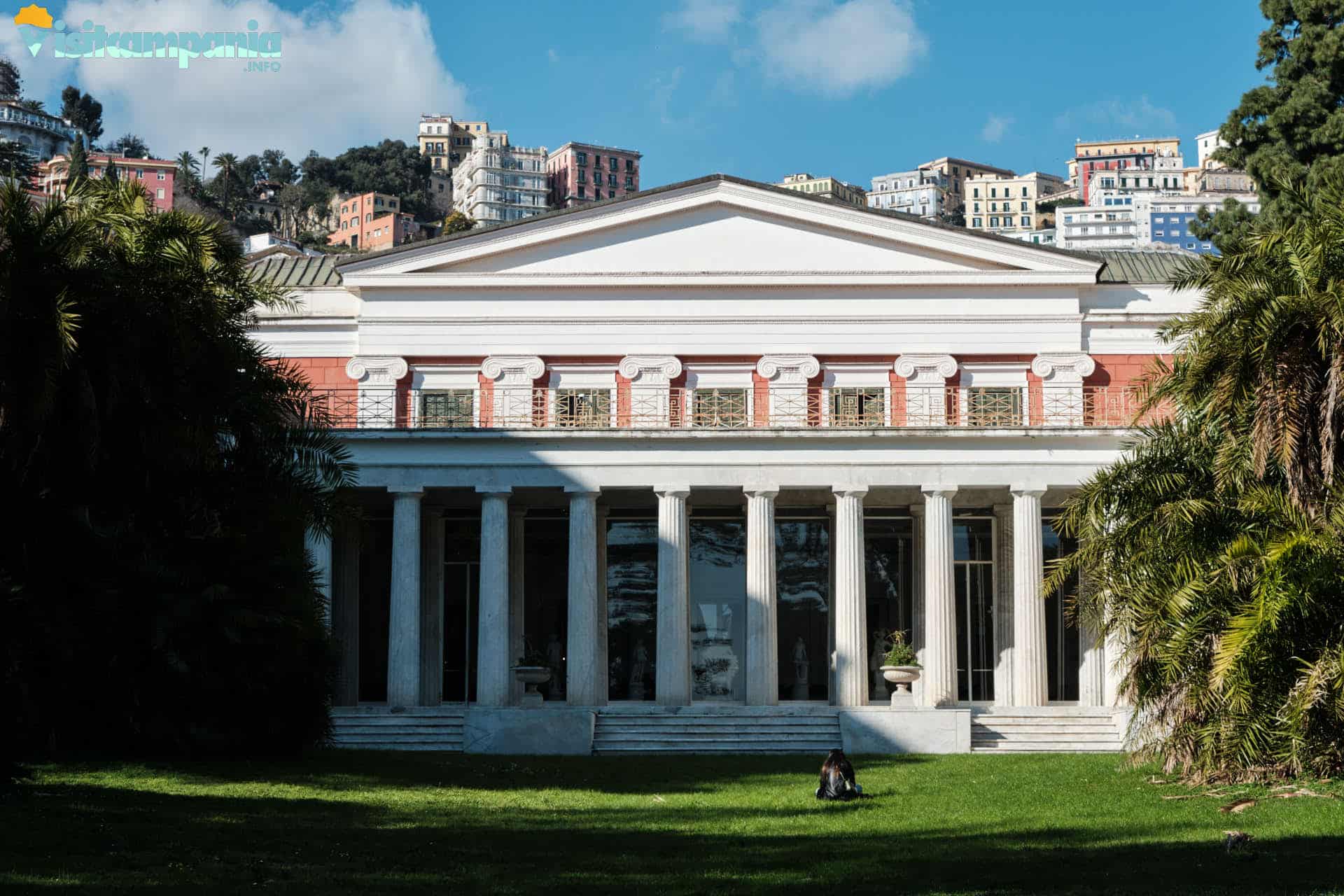
Even before entering the villa, from the outside of the gate, the neoclassical decorative structure reminiscent of a Greek temple immediately strikes the eye. In fact, on the ground floor the imposing colonnaded portico (peristyle) with neo-Doric capitals immediately catches the eye while the windows on the first floor are interspersed with semi-columns surmounted by neo-Ionic capitals that support the pediment. The scenic impact is accentuated by the large parterre garden, in English style, which precedes the main building.
The entrance to the villa is located on the back side beyond which extends another garden in which there are rare plants, camellias and a large magnolia. Here and there are other picturesque buildings such as the neo-Gothic turret, the Swiss chalet and the greenhouse. Beyond the main building, the garden is closed by the former stables, now home to the carriage museum, and a three-storey building commissioned by the Rothschilds.
The interiors and collections of the Pignatelli Aragona Cortes museum
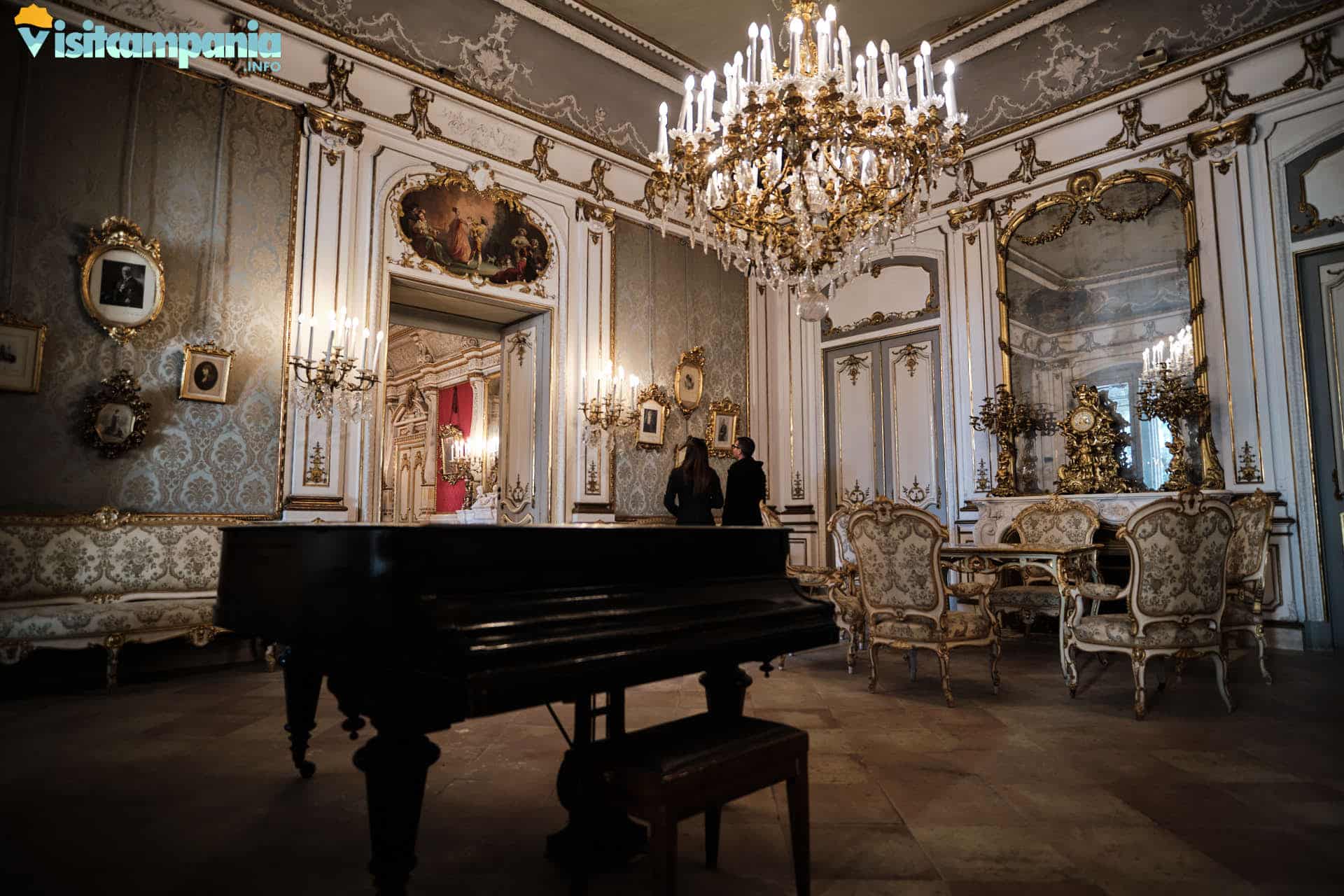
The interior of Villa Pignatelli is, of course, sumptuous among golden stuccoes, works of art, furnishings and precious objects. What is really striking, however, is the suggestive and well-kept overall set-up. The rooms are reconstructed in detail in their functionality of use to vividly recreate the refined aristocratic atmospheres that certainly emanated from the villa when it was inhabited. In short, it does not really seem to wander around a dusty museum and you would hardly be surprised to see an incipriata lady appear accompanied by her noble knight.
Without dwelling on boring descriptions of all the environments, it suffices here to say that, on the ground floor, we can admire, beyond the circular vestibule with perforated vaults in neo-Palladian style, the reception rooms, the Red, Green and Blue living room, the library, the room for gala lunches, the neoclassical veranda and the ballroom with adjoining orchestra room and semicircular dressing table in Pompeian style.
In 2015 , some private rooms on the first floor were also opened to the public, including the prince’s private bathroom, the princess’s study and her boudoir (sitting room).
The furnishing elements, all original, range from the precious damask fabrics that cover the walls, to the refined nineteenth-century furniture, to the precious collections of ceramics and porcelain, to the paintings and sculptures that embellish already sumptuous environments. There is also a large collection of books and vinyls of classical and lyrical music.
Curiosities of Villa Pignatelli
Among many wonders, I point out some curiosities to pay attention to:

- In the painting on the ceiling of the Red living room, which represents an Allegory of Architecture, a small genius is depicted holding a sheet with the plan of the villa drawn;
- Also in the Rosso living room, the stuccoes and other decorative elements are the work of Gaetano Genovese, a well-known architect of the time who also worked on the throne room of the Royal Palace of Caserta and the restoration of the Royal Palace of Naples;
- In the library there is a bronze sculpture of Narcissus, dedicated to Prince Diego Pignatelli, made by Vincenzo Gemito in 1886;
- The wallpaper that covers the walls of the library is in leather with gold decorations imprinted;
- The gilded bronze bust that can be seen in the ballroom depicts the conqueror Fernando Cortes, ancestor of the Pignatelli, and comes from the funerary stele of the monument erected in the church of the Hospital of the Gesù in Mexico City;
- At the beginning of the staircase leading to the first floor there is a marble bust of Pope Innocent XII born Antonio Pignatelli;
- Inside the villa are exposed various objects in ceramics and porcelain of value, coming from the main European manufactures of the nineteenth century. Among these, many come from the Royal Factory of Capodimonte such as biscuit porcelain pieces, similar in appearance to marble;
- In the veranda there is a statue depicting one of the owners of the villa, Diego Pignatelli, Duke of Monteleone, portrayed in a classical pose similar to that of a Roman emperor;
- The small semicircular toilet cabinet, known as Salottino Pompeiano, was used by noble guests during parties and dancing evenings to tidy up hairstyles;
- Among the two thousand volumes that make up the book heritage of Villa Pignatelli there are extraordinary works such as the complete series of the Royal Bourbon Museum that illustrates with prints the Vesuvian finds and the Declaration of Drawings of the Royal Palace of Caserta;
The House of Photography

On the first floor of the villa, where once there were three bedrooms, a dining-living room and the guest bathroom, the House of Photography is now set up. The rooms are bare and the original decorations have been lost. However, the simplicity of the environments makes them perfect for hosting photographic exhibitions. By not offering distracting elements, the visitor can better concentrate on the works on display in an almost immaterial atmosphere.
The first exhibition, dedicated to Ugo Mulas, was set up in 2010. Since then there have been events, exhibitions, meetings that make the House a dynamic place and a reference point for all those interested in photography as an artistic and cultural expression. In addition, over the years, the House of Photography has begun to accumulate its own permanent collection to date consisting of 20 works made by 17 photographers.
The Carriage Museum

Leaving Villa Pignatelli and going up the rear garden on the left side, you reach the ancient stables now home to the Carriage Museum.
Focused on the initial donation made in 1960 by the Marquis of Civitanova Mario D’Alessandro, to whom the museum is dedicated, it has been enriched, over the years, with various other pieces always the result of donations. Thus, in 1960 it was the Marquis Spennati who enriched the museum’s collection, followed by Count Dusmet in 1962, Count Leonetti di Santojanni in 1973 and Giovanni Strigari in 1979.
Today The museum’s collection is composed of 34 carriages and buggies, Italian, English and French production of the late 800 and early 900, as well as various harnesses and whips What do they do with it? A world-class museum able to compete with the carriage museums of Versailles and Turin.
Opened in 1975, it was finally reopened in 2014 after years of closure. The new exhibition layout responds to modern criteria focused on interactivity and teaching. There are, in fact, several multimedia stations to deepen the knowledge of the world of carriages and a playful-educational station for children with interactive games on the construction of the carriage and the dressing of the horse and coachman.
In detail, you can see various types of carriages such as the imposing Coaches, heavy stagecoaches for the transport of mail and travelers, the Phaeton, large walking carriages, the Breaks, hunting carriages equipped with housing for dogs. And then the Coupé, the Otto Molle, the Road coaches and various buggies that made the history of mobility before the invention of the automobile. Finally, the collection is completed by various harnesses, elements that serve to attach the horse to the carriage, such as rudders, harnesses, bridles, blinkers, reins, harnesses, and numerous whips and hunting whips of great value.
To learn more
- Villa Pignatelli – House of photography (facebook);
- Tg3 Villa Pignatelli (video);
- Naples – Villa Pignatelli and the carriage museum (video);
- The historic apartment in Villa Pignatelli (website);


